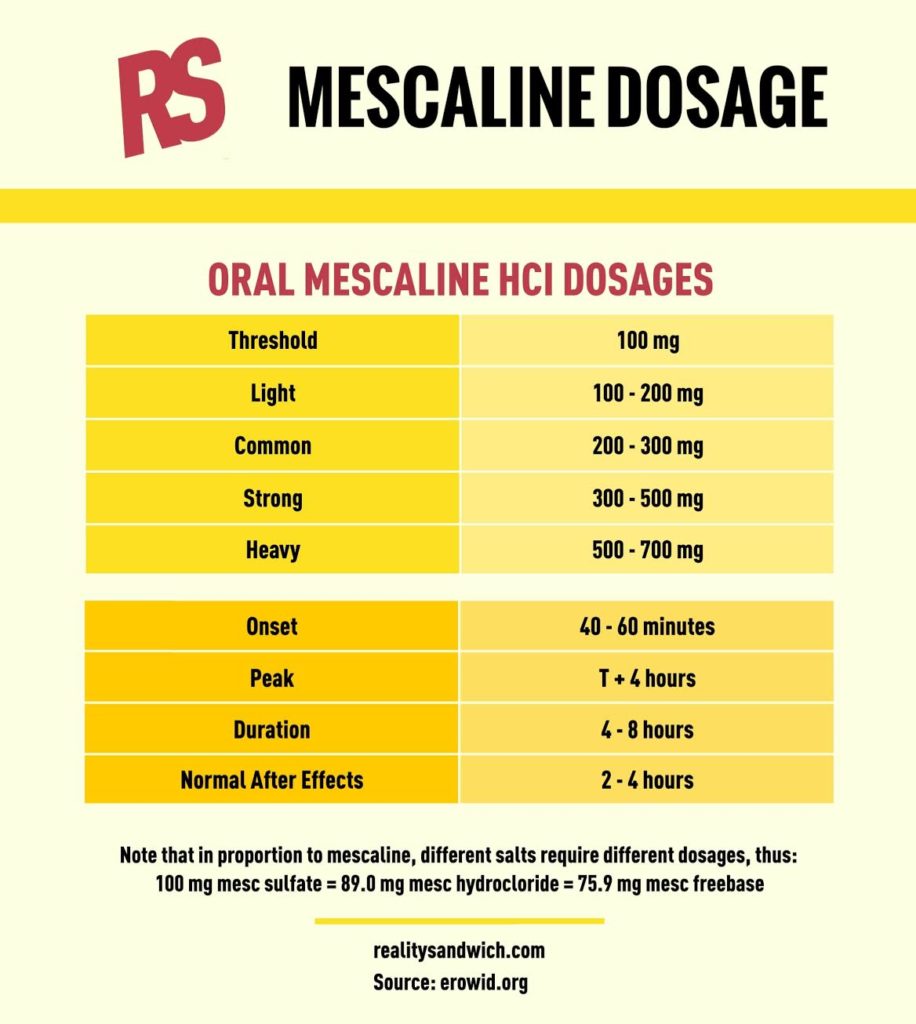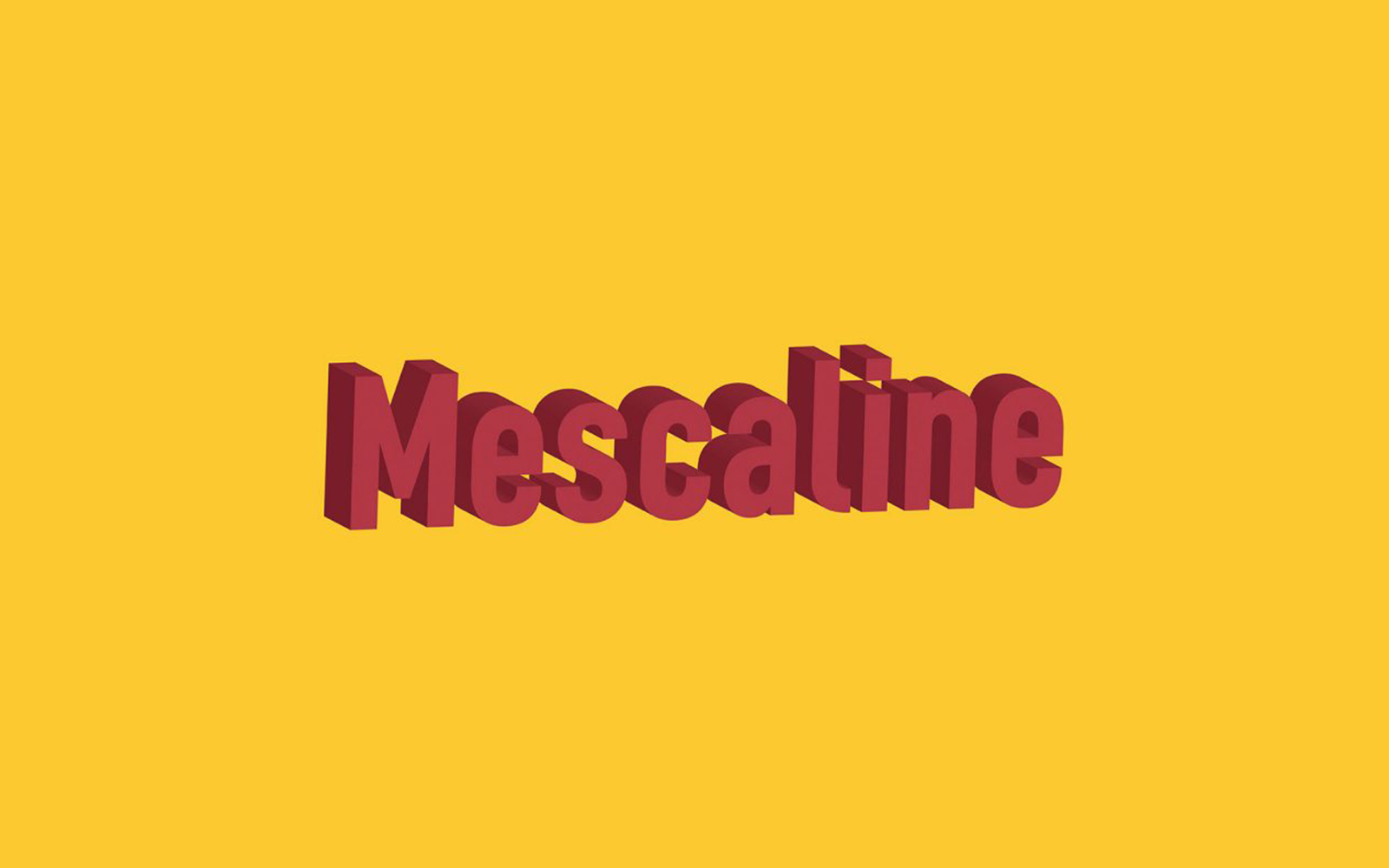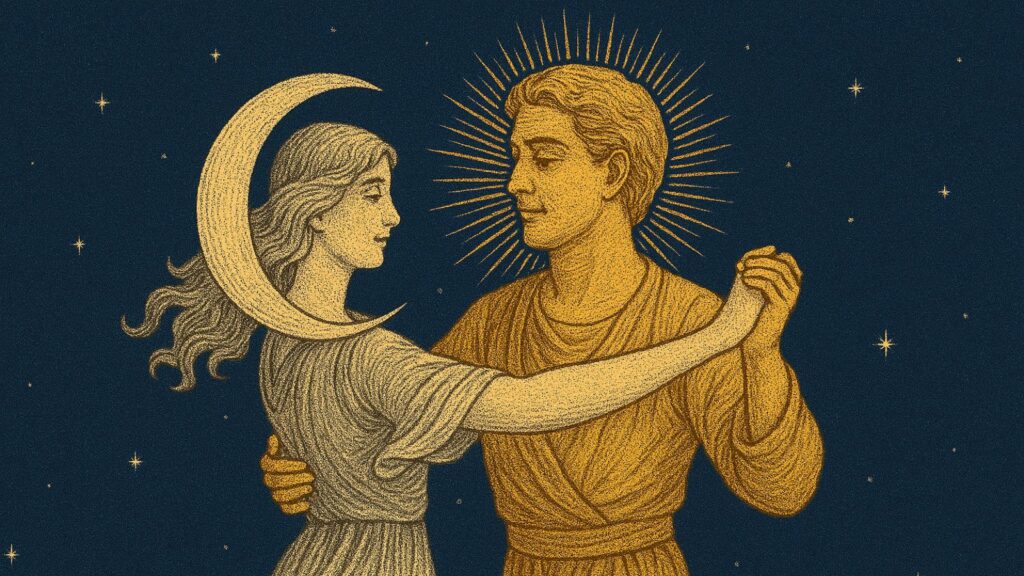Mescaline has a deep seated history in Native American cultures, playing a large role in many of their ceremonies related to spiritual healing. It was also one of the first psychedelics to enter Western culture, paving the way for LSD and Psilocybin. Despite this, it hasn’t gained the same popularity in modern times. In a recent global survey of drug use, Mescaline only appeared on Mexico’s list of the top 20 drugs used. Furthermore, out of the top 20 most used drugs in Mexico, Mescaline use rated at 4.4%.
Best known as the primary active compound in the San Pedro, Peyote, and Peruvian and Bolivian Torch cacti, these plants were commonly used in shamanic rituals throughout the Americas. Shamans would make a ceremonious tea by grinding up the cactus until it became a slushy liquid. After placing the ground up cactus into a ceremonial bowl, the shaman passed it around in liquid form for people to drink, oftentimes right before evening. Performing this ceremony healed a person’s spirit through an intense introspective trip.
Table of Contents
Overview
Pure Mescaline dates all the way back to 1897 when a German chemist, Arthur Heffter, first isolated and identified it as the active compound in Peyote. Shortly after, in 1919, Ernst Späth first synthesized Mescaline in a laboratory setting. Mescaline is thus the first psychedelic compound to be synthesized. Since then, many discovered a variety of ways of synthesizing Mescaline, using different starting materials and techniques.
Mescaline produces similar psychedelic effects to LSD and psilocybin. The full trip on a “common” dose typically lasts around four to eight hours, so pretty similar to the length of a psilocybin trip. The visual effects of Mescaline, while similar to LSD, have their own unique appearance. Many people describe the visuals as a “geometrization” of regular objects, similar to a Picasso painting and other great cubist artists.
What is Mescaline
Mescaline is a plant-based phenethylamine psychedelic substance. It is naturally found in cacti from the Lophophora and Echinopsis (formerly known as Trichocereus) genera. The most common of these cacti are the Peyote, San Pedro, and Peruvian Torch. They are slow-growing cacti found in the southern United States, Mexico, Central America, and South America. A typical preparation of these cacti includes cutting off the top of the cacti while leaving the taproot for new heads to grow. The tops of the cacti are then dried and either chewed or steeped into a tea in order to produce Mescaline’s psychedelic effects.
Some acacia species contain Mescaline as well, such as Acacia Berlandieri and Fernasiana. Typically, Acacia species are leafy trees with psychoactive alkaloids commonly found in their barks and leaves. Unlike the cacti mentioned earlier, acacia species that contain Mescaline also tend to have much higher concentrations of other psychoactive compounds. This gives the Acacia species a unique trip due to the combination of various psychoactive compounds.
Regardless of its source, Mescaline produces hallucinogenic and self-exploratory effects with a unique empathic element when consumed. This unique energy, along with the psychedelic effects, gives Mescaline its particular quality as a spiritual healing plant. This energy comes from Mescaline’s chemical composition, which is similar to MDMA, 2CB and Amphetamines. MDMA is an “empathogenic” substance that is proving to be successful in treating addiction and PTSD. Thus, Mescaline might share some of these same properties due to its similarities. We’ll get further into this in the next section!
Scientific Name

Mescaline is the common name for 3,4,5-trimethoxyphenethylamine. It is a Phenethylamine type molecule that puts it in the same category as substances such as MDMA, MDA, 2CB and various Amphetamines. This similarity with Amphetamines gives Mescaline an empathetic aspect to it not seen in most other psychedelics. Like MDMA, Mescaline increases both cognitive and emotional empathy in its users.
Emotional empathy is when you unconsciously feel the emotions of someone else, while cognitive empathy is when you actively try to understand how and why someone is feeling the way they do. While it is still very introspective like most psychedelics, it projects the user outward as well, by enhancing their ability to empathize with others and reflect on how their actions affect the world around them.
There are other, less known, Phenethylamine psychedelics such as 25I-NBOMe, 2C-B, DOB, and many others. These compounds tend to have that same energetic feel as Mescaline, but most other Phenethylamine psychedelics don’t result in as deep of a trip. They tend to be closer to MDMA with limited visuals.
Forms & Ways of Consumption
Mescaline, when it is pure, comes in a white crystalline or powdered form. Some imperfections may appear due to oils or plant materials left behind during the extraction process. Another, more complicated method of extraction can yield more concentrated and pure substances such as Mescaline sulfate or Mescaline hydrochloride (HCL). One can take Mescaline Sulfate and Mescaline HCL orally, nasally or rectally. Needles however are a dangerous form of consumption, and should not be used to take any substance.
There are two ways of making Mescaline, either extracting it directly from a Mescaline-containing plant or synthesizing it in a lab. Synthesizing Mescaline in a lab produces a purer product, but it is almost never done, unless it’s for a scientific study. Usually, Mescaline is made by extracting it from a plant such as Peyote. This is a less expensive way of making Mescaline thus it’s more common. When Mescaline is extracted from a plant, sometimes there will be some residual plant matter left behind, resulting in a slightly tanned product.
Dosage
The suggested dosage by Erowid, a renowned resource for drug safety, is as follows:

These dosages are based on pure Mescaline. They will vary depending on the process used to create Mescaline, as they will have different molecular weights. Molecular weight refers to the mass of a specific molecule. Processes that create variations of Mescaline with a higher molecular weight, such as Mescaline Hydrosulfate, will require a higher dosage than the doses recommended in the table above. Variations with a lower molecular weight, such as Mescaline Hydrochloride, require a smaller dosage than the recommends table above. A more detailed guide on how to calculate dosage based on the extraction or synthesis process can be found on the Erowid site.
Conduct a test dosage for any substance that you use, well below the threshold dose. This helps to determine any possible allergies or bad reactions to the substance. It takes a relatively high dose to feel the effects of Mescaline thus it cannot come in the form of a microdot or tab like LSD can. The amount required to feel the effects of Mescaline makes it impossible to produce in the form of microdots or tabs. Thus, if you get microdots or tabs, know that it is not Mescaline. Since pure Mescaline comes in a white crystalline or powdered form, it will look the same as a whole slew of other substances. This makes testing Mescaline far more important than others that have a unique appearance, such as liberty cap mushrooms. Regardless, you should always test your substances!
History
Mescaline is a natural psychedelic found in several cactus species such as Peyote and San Pedro. Native American cultures would use these cacti as a tool in spiritual healing and shamanic rituals. The San Pedro cactus was so important to the Andean Shamans, they referred to it as the primordial soup of the cosmos. Tribes in Texas and New Mexico, such as the Chichimeca and Tarahumara, would even use Peyote to ease the pains associated with long-distance migrations by foot.
Isolating Mescaline
Arthur Heffter was the first person to isolate Mescaline in 1897. He isolated it from the Peyote cactus, which was already known to produce hallucinogenic effects. Heffter even went as far as testing the substances he isolated from the Peyote cactus on himself. Thus, he became the first “psychonaut.” Ernst Jünger gave him that name in a journal that he used to document his personal experimentations with drugs. Jünger was a decorated German soldier in World War I and the son of a successful chemist. This likely fueled his enthusiasm to experiment with different psychedelics to cope with PTSD. Furthermore, Mescaline was the first psychedelic compound to be isolated, nearly 50 years before Hoffman synthesized LSD. These two substances, Mescaline and LSD, were the first to be classified as psychedelics.
Hefftner was the first person to isolate Mescaline from the Peyote cactus. He was not however the first to synthesize it in a laboratory setting. Ernest Spat, an Austrian chemist, first synthesized Mescaline in 1919. Thus, Mescaline was also the first psychedelic compound to be synthesized in a laboratory setting. He created Mescaline out of 3,4,5-trimethoxybenzoyl chloride.
Synthesizing Mescaline
After Spat synthesized Mescaline, other chemists figured out many other ways to synthesize the substance as well. The most notable of these syntheses is Albert Hoffman’s rearrangement of 3,4,5-trimethoxyphenylpropionamide to create Mescaline. This rearrangement created an entirely new way of synthesizing chemicals in laboratory settings, now known as the Hoffman Rearrangement. Hoffman’s method is still used by organic chemists today.
Alexander Shulgin, one of the most popular psychedelic scientists to this day, named Mescaline as his inspiration to pursue research into psychedelic and mind-altering substances. Just like Heffter and Hoffman, Shulgin was also a proponent of testing these substances on himself. He would go on to popularize MDMA in psychedelic therapy settings, and most notably create the Shulgin Rating Scale. The Shulgin Rating Scale is still in use today as a way of describing the effects of psychoactive compounds. It includes specific vocabulary that refers to the visual, auditory, and physical abnormalities caused by various substances.
Aldous Huxley: Doors to Perception
Mescaline’s inspirational effects didn’t stop there. In 1954, Aldous Huxley wrote an entire book, Doors of Perception, detailing a Mescaline trip he had in 1953. After releasing Doors of Perception, he met strong criticism from practitioners of the Christian faith. The most prominent amongst his critics was Robert Charles Zaehner, an Oxford University Professor. He said that neither Mescaline, nor any mind-altering substance, was valid in the eyes of the Christian God. Famously, Huxley then questioned why the Christian faith accepted alcohol, but considered other forms of coping and altering one’s state of mind to be pervasive. This is still a point of contention in the psychedelic community today. Most societies and religions reject mind-altering substances but accept alcohol use, which is more detrimental to one’s health.
One potential side effect of Mescaline and most other psychedelics is HPPD (Hallucinogen persisting perception disorder). In a famous story, Jean-Paul Sartre, a french existential philosopher, participated in an experiment at a hospital in Paris. After being injected with Mescaline, he had persisting visual distortions for weeks.
Sartre however experienced more severe effects from HPPD. He reported that crabs were following him everywhere he went for an entire year. Eventually, he grew concerned that he would not be able to differentiate between his hallucinations and reality, so he got help from a psychoanalyst. He was able to recover his faculties relatively well. Nevertheless, crabs became a recurring theme in his work after that trip.
Laws and Legal Status
The United States made Mescaline an illegal substance in the Comprehensive Drug Abuse Prevention and Control Act in 1970. It was classified as a Schedule 1 hallucinogen. According to the DEA, a drug is classified as a Schedule 1 substance under these conditions: it must have no currently accepted medical use, a lack of safety standards under medical supervision, and at least some potential for abuse.
The United Kingdom considers Mescaline a Class A drug, which makes it an illegal substance without medicinal value. It is however legal to purchase and carry dried cacti containing Mescaline.
Mescaline became an internationally prohibited substance according to the 1971 Convention on Psychotropic Substances. Since then, other countries have chosen to create their own regulations for Mescaline. Australia treats Mescaline as a Schedule 9 substance under the Poisons Standard of 2015, making it an illegal substance. A Schedule 9 substance is considered to have a high potential for causing harm at low doses, and to be dangerous to handle. In Canada, France, The Netherlands, and Germany, pure mescaline and dried mescaline cacti are illegal. However, anyone may grow the Peyote, San Pedro, and Peruvian Torch cacti, but intent to use is illegal.
Pharmacology
Mechanism of Action
When Mescaline enters the body, it binds to the 5-HT2A and 5-HT2C serotonin receptors in the brain due to its structural similarities to the neurotransmitters dopamine and noradrenaline. The 5-HT2A and 5-HT2C receptors are mostly located in the neocortex of the central nervous system. These play a role in how we perceive the world through our senses. Scientists believe Mescaline binding to these receptors causes the psychedelic and hallucinogenic effects.
Toxicity
Before we can discuss whether or not Mescaline is toxic, we first need to define what makes a substance toxic. Toxicity is defined based on the levels of exposure required for a substance to cause harm to a human or animal. The level of toxicity is measured based on the dose required to cause harm to a human. Even water can be toxic in too high of a dose and lethal snake venom can be non-toxic in a small enough dose. LD50 is a common measurement of toxicity, which measures the lethal dose for half of the tested organisms.
No clear data on the toxicity of Mescaline exists. However, lab trials did determine oral doses in rats, in order to establish an LD50. LD50 refers to the lethal dose for half of the tested organisms. The trial found the LD50 to be 880mg/KG. For an average adult, this would be around 60 grams of pure Mescaline. A direct translation between LD50 in rats and humans however is not possible since their metabolisms differ. Thus far, there hasn’t been any recorded death from a Mescaline overdose.
Little historical data exists on the effects of prolonged use of Mescaline. So, it is best to stay safe and keep your number of trips to a minimum.
Interactions
Mescaline causes cross-tolerance with other serotonergic psychedelics such as LSD and psilocybin. Thus, if you use substances like Mescaline, LSD, or psilocybin within a few days of each other, all of these substances will have a lesser effect.

Many people who use psychedelic substances frequently during a short span of time report losing the magic in later uses. This is when someone is not able to receive many of the benefits that come along with using psychedelics. Trips will cease to have the same positive after-effects, such as an elevated sense of connectedness, overcoming bad habits, and much more.
Common Side Effects
As with other psychedelic substances, common side-effects include:
- Vasoconstriction
- Dilated pupils
- Temporary bladder issues
- Constipation
- Headaches
- Nausea
- Sweating
- Difficulties speaking
- Difficulties having sexual intercourse
Due to the introspective nature of Psychedelics, it is easy for users to spiral out of control if they have existing issues with anxiety and fear. Therefore, make sure you’re in a right state of mind, or at least check-in with where you’re at mentally and emotionally before you use any psychedelic substance. And, perhaps it goes without saying but no one should drive or use heavy machinery while on Mescaline or any mind-altering substance.
Adverse Effects
As with most psychedelics, one can build up a tolerance to Mescaline fairly quickly, and it could be noticeable even after your first use. If used repeatedly over a short span of time, it will require higher doses to experience the same effects. As mentioned earlier, one can build up a “cross tolerance” to LSD, Psilocybin, and all other serotonergic substances. To avoid developing a cross tolerance to Mescaline, or any psychedelic, one needs to be aware of how frequently they’re using substances that react with their serotonin receptors. Most psychedelics do react with your serotonin receptors. Thus, make sure to space out any psychedelic use to experience their full effects.
As with every other psychedelic, mescaline can cause HPPD (Hallucinogen persisting perception disorder). This disorder usually manifests as “visual snow,” which is when you see visual particles in the air blurring your sight. In extreme cases, HPPD can result in full blown hallucinations for prolonged periods of time.
There is a certain chance that psychedelics such as Mescaline can cause PTSD (Post traumatic stress disorder) during challenging trips. This is why you should always have an experienced tripsitter who can guide and calm you if you begin to have an intense experience. You should also make sure to consciously evaluate your current mental state prior to taking any psychedelics, as it is possible to spiral out of control during a trip.
FAQ
Does Mescaline Go Bad?
Like other substances, you should store mescaline in a dry, cold and oxygen-free environment. It is not as unstable as LSD so you shouldn’t be concerned that it will lose its potency. Mescaline doesn’t become toxic as it degrades.
What Does Mescaline Taste Like?
All alkaloids taste bitter, and mescaline does too. If you take mescaline inside a capsule however then you won’t taste it.
Is The Trip Between Pure Mescaline and Cacti Containing Mescaline Different?
Tripping on pure Mescaline and cacti-containing Mescaline, such as Peyote, San Pedro, or Peruvian Torch are relatively similar. However, the experiences will have very minor differences due to other alkaloids these cacti contain. In describing the difference between these cacti and pure Mescaline, users say that the cacti have less of a clear thought process. Meaning, you don’t know what you’re thinking about and why. This would be somewhat similar to the differences in effect between smoking cannabis flower and vaporizing a pure extract.
How Do I Test For Adulterants Within Mescaline?
An adulterant is an added substance that shouldn’t be there. It could be a residual chemical from a laboratory extraction or synthesis, or a less expensive compound added to pure mescaline in order to increase profitability. You can use a Marquis test to check for most common adulterants that could be in Mescaline. A Marquis is a chemical reagent test that produces specific colors when mixed with specific substances. While this won’t rule out all adulterants that could be in Mescaline, it will rule out most of them. Marquis tests are also a really inexpensive and quick way to test your substances, so this should be the minimum you do in ensuring your substances are pure.
Does Mescaline Carry Any Risk of Addiction?
According to Erowid, Mescaline will not cause physical dependencies and is unlikely to cause a psychological addiction. There hasn’t been a report thus far of someone who has experienced withdrawal symptoms.
Contributor | Cort Honey
Disclaimer: Mescaline is potentially categorized as an illegal drug. Reality Sandwich is not encouraging the use of this drug where it is prohibited. However, we believe that providing information is imperative for the safety of those who choose to explore this substance. This guide is intended to give educational content and should in no way be viewed as medical recommendations.
If you have relevant information or updates concerning the research and studies of psychedelic substances, please reach out to info@realitysandwich.com We appreciate your contribution. –RS













